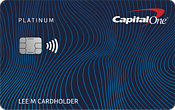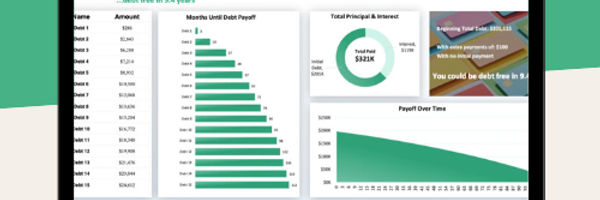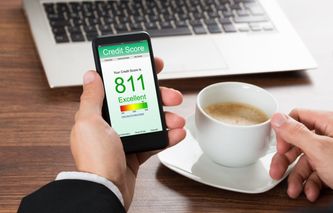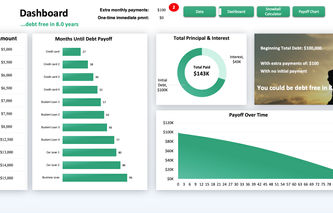How did your colleague who spends half their time playing Sudoku get a mortgage quicker than it takes to hide their puzzle-playing habits from the boss? And how did Harry from HR apply for a car loan faster than it took for you to register a complaint?
Well, that’s what good credit gets you (regardless of your work performance).
If you’ve got your hands on a credit card, you’re already halfway there. (The rest is as easy as calling in sick after your hairdresser accidentally dyed your hair green.)
This article will tell you
How to understand your credit score.
How to use a credit card to increase your credit score.
The best credit-building credit cards.
Other credit-building tips and tricks.
How to Build Credit With a Credit Card (Best Ways to Improve Credit)
Whether making a payment or taking out a loan, your entire credit history is reported to at least one of the credit bureaus (Equifax, Experian, and TransUnion), who use the information to determine your credit score.
Unlike in school, where you could risk back-chatting with the teachers, you’ll need to show responsible behavior to raise your score.
With good credit, you’ll get a bunch of benefits, like—
Lower interest rates
Greater negotiating power
More chance of a credit card or loan approval
Good insurance rates
More lender choices
Understanding your credit score
Before you begin your credit-building journey, you need to know where you’re starting from.
Many lenders and experts use FICO to calculate credit scores based on your—
Payment history (35%)
Amounts owed (30%)
Length of credit history (15%)
New credit (10%)
Credit mix (10%)
These factors will determine where you land on the credit ladder, which is broken down into these five groups:
Excellent: 800–850
Very Good: 740–799
Good: 670–739
Fair: 580–669
Poor: 300–579
Now that you know where you stand, let’s dive into how you can work your way up the credit score ladder (and earn those all-important bragging rights)—
Best Ways to Build Credit with a Credit Card
Learning how to build credit with a credit card isn’t complicated.
We’re going to prove it to you in eight simple steps—
1. Choose the right card for you
Let’s say you want to speak Italian. But dreaming about mingling with the locals over pizza (and saying more than just “mamma-mia”) is a little far-fetched if you don’t have a solid foundation to get started.
Building credit without the right credit card can also be a real pizza-work.
Credit cards have different credit score requirements (so you’ll need to know your own credit score before applying).
Most cards ask for good or excellent credit—but there are also plenty of unsecured cards for those with bad credit. (These tend to have higher fees and fewer rewards, but it’s a great chance to improve your credit score and graduate to a better card.)
Or maybe you have fair credit—you're just looking to improve it. These three cards below are great options for that. Why not build credit and get some rewards while you're at it?
 Upgrade Cash Rewards Visa® 4.4 |  Capital One QuicksilverOne Cash Rewards Credit Card 3.6 |  Capital One Platinum Credit Card 3.5 |
Annual fee $0 | Annual fee $39 | Annual fee $0 |
Rewards rate 1.5% Earn 1.5% unlimited cash back on card purchases every time you make a payment. | Rewards 1.5%–5% 1.5% cash back on every purchase, every day. 5% cash back on hotels and rental cars booked through Capital One Travel (terms apply). | Rewards N/A |
Intro offer $200 Earn a $200 bonus after you open a Rewards Checking account and make 3 debit card transactions within the first 60 days. | Intro Offer N/A | Intro offer N/A |
Learn more | Learn more |
When researching credit cards, here are some key features to look out for—
Credit score requirements
APR (annual interest rate)
Annual fees
Rewards and perks
Cash back schemes
Introductory offers
When you apply for credit cards to build credit, it usually only takes a few minutes. Just be careful how many times you apply, as your credit score can take a hit each time a credit issuer checks your credit history.
2. Make on-time, full payments
We’ve all been there. You rock up at a restaurant fifteen minutes late and blame it on the terrible traffic. But in the world of credit, tardiness just doesn’t fly.
Your payment history makes up 35% of your overall credit score—so any late or missed payments will have a notable impact.
If you want to build credit fast with a credit card, you can start paying off your card balance in full (and avoid paying extra interest).
If that’s not possible, aim to make regular monthly payments.
If you’ve taken a loan out in the past and it’s still hanging over you—it’s not all bad news. If you make punctual loan repayments, your good behavior will get reported to the credit bureaus, and that credit score will start to creep back up.
Be careful not to make a missed or late payment—the credit issuer will report it to the credit bureaus if it’s over 30 days late. It can stay on your record for up to seven years.

Lay out your credit card debt with the minimum payments and interest to see how long it will take to pay off!
What you will get:
Interactive dashboard
Customizable to your needs
Stay on track with charts and graphs
Suitable for up to 16 or 32 debts!

3. Use your card frequently
There’s always a little guilt after going out to buy a new pair of shoes and coming back with the entire store. But when it comes to building credit, you can feel a little less guilty about your spending habits as long as you increase your credit score with credit card payments—
Regular purchases show card issuers that you’re making the most out of your account—instead of leaving it unused. Your length of credit history—which covers how long you’ve been using your accounts and how active they are—makes up 15% of your credit score.
But as much as that payday shopping spree is calling to you—watch out not to spend more than you can afford to pay off.
A smart way to hack the system is to make small recurring transactions every month, like household bills or subscription services.
And if you’re the forgetful type, you can automate your account so you never make a late or missed payment.
4. Avoid multiple new credit applications
“Jack of all trades, master of none” can be great for a small-town circus performer with a bunch of tricks up his sleeve—but it won’t work in your favor when it comes to building credit.
Instead of clowning around, it’s better to show predictability and consistency. When you build up your credit on one card, the bureaus can know what to expect from you.
Applying to a bunch of new cards lowers the average age of your accounts—which isn’t good for your credit score. Unusual behavior can also send red flags to lenders who might think you’re in some financial trouble.
Getting a new card is fine. Just don't go crazy and get two, three, or even more. Choose a card that's best for you and stick with it.
Read more: How Many Credit Cards Should I Have?
5. Keep your credit utilization low
A word of warning—we’re about to talk numbers.
But don’t skip over this part yet, this one’s important. We’re going to keep you here by breaking it down.
Your credit utilization ratio is a fancy way of describing how much available credit you’re using.
You can figure this out by—
Calculating the sum of all your revolving credit balances.
Calculating the sum of all your credit limits.
Dividing the total revolving credit balance by the total credit limit.
Multiplying the amount by 100.
If Card A has a revolving balance of $200 and a limit of $1000—and Card B has a balance of $150 and a $600 limit—you would end up with a 21.8% overall utilization.
And if this is close to your own figure—congratulations.
Anything below 30% is considered a good credit card utilization (and if you’re below 1%, you’re passing with flying colors).
We’ve wrapped our heads around the maths—but how do you keep that utilization low?
If you have a low credit limit, try limiting your credit use and paying off your card’s balance before the due date. (You can also pay your monthly balances twice a month to really boost your score.)
6. Increase your credit limit
You’re finally ready to level up in your life plan—you’re going to make roots, get a mortgage and find a house that’s big enough for you and your ever-growing animal jumper collection.
A high credit card limit makes getting a mortgage or car loan much easier—but it’ll also help lower your credit utilization ratio. (And if we managed to keep your attention earlier, you’ll know that’s good news for your credit score.)
But this one isn’t as simple as calculating a few figures. You’ll have to show responsible credit behavior over time—make sure to keep your credit utilization low, and show you’re financially stable.
From there, you can request a higher credit limit on the card issuer’s website or call them if you prefer to speak with an actual human.
Raising your credit limit is a good idea if you want to raise your credit score. But don’t rely on this tactic if you’re struggling financially—it can easily backfire and land you in debt.
7. Monitor your transaction and credit history
The new year is here, and you’re jumping on the health and fitness bandwagon (hopefully, for more than three weeks this time).
Like with any goal, monitoring your progress can make all the difference. The same rules apply here (minus the guilty pleasures).
To help you out, Experian offers a free credit report, where you can access a bunch of features, such as—
Current credit balance
Payments history
Total debt
FICO credit score breakdown
Daily credit monitoring
By tracking your credit status and activity you can also spot and dispute any errors or suspicious transactions which could be affecting your credit score.
Keeping tabs on everything will help you pinpoint where you're falling behind and which areas you need to improve.
(Check out this free credit monitoring tool to keep an eye on your financial goals.)
8. Use your card wisely
Think of it this way—the three credit bureaus are Big Brother and the audience. They’re watching your every credit move.
Crazy behavior can raise eyebrows, and you’re here to win—so play it safe and stick to the rules of the game.
To keep control of your spending, try creating a budget and a plan to pay off your balance or monthly bills on time and in full.
Show how responsible you are by limiting new credit card applications, staying out of debt, and keeping your credit utilization low.
Follow these steps, and you’re sure to take home the crown (and an excellent credit score).
Best Credit Cards to Build Credit Score
There are tons of credit cards out there—all promising the best interest rates, rewards, and the chance to boost your credit.
If you don’t know where to start, we’ve rounded up the best credit cards for building credit—
Petal® 2 Visa® Credit Card
| Name | Score | Visit | Regular APR | Regular APR | Intro Offer | Credit Needed | Disclaimer | |
|---|---|---|---|---|---|---|---|---|
 | 8.8 | Visitpetalcard.com | 18.24% - 32.24% | 18.24% - 32.24% | N/A | Bad to fair (300-600) |
If you want the freedom to splurge (while not overspending), the Petal® 2 "Cash Back, No Fees" Visa® Credit Card has an impressive credit limit of $100,000.
And you’ll enjoy spending even more with their cash back of 1%–1.5%, and 2%–10% at select merchants.
You won’t get charged any extra fees for yearly expenses or late charges—and the credit card does come with a fairly standard rate: 18.24% - 32.24% Variable APR.
Interested in other similar cards? Check out our recent review of the top Guaranteed Approval Credit Cards With No Deposit.
For more information, read our Petal 2 Visa Credit Card review.
Capital One Platinum Secured Credit Card
| Name | Score | Visit | Annual Fee | Regular APR | Intro Offer | Credit Needed | Disclaimer | |
|---|---|---|---|---|---|---|---|---|
.svg) | 7.0 | Visitcapitalone.com | $0 | 30.74% (Variable) | N/A | Fair (580–689) |
For a secured card, Capital One Platinum Secured has a pretty low minimum deposit, starting from just $49—not bad for those on a budget.
And if you really are set on budgeting—the card starts with a $200 credit limit, with the opportunity to increase it to $1,000 if you fancy splurging from time to time.
To make your life easier, you can track your score for free by using their CreditWise feature and set up Auto-Pay so you never miss a payment.
For more information, read our Capital One Platinum Card review.
Chime Credit Builder Visa Credit Card
As the name suggests, the Secured Chime Credit Builder Visa® Credit Card is aimed at building credit—and you won’t need to reveal your credit score to get set up.
There are no interest or annual fees. To get started, all you need to do is deposit $200 deposit into your checking account.
Once you’ve got your hands on the card, you can go big or go home (literally)—with a credit limit that starts from $300 and goes up to $10k.
For more information, read our Chime Credit Card review.
Tomo Credit Card
| Name | Score | Visit | Annual Fee | Regular APR | Intro Offer | Credit Needed | Disclaimer | |
|---|---|---|---|---|---|---|---|---|
.svg) | 7.6 | Visittomocredit.com | $0 | 0% | N/A | Bad to fair (300–600) |
For all you credit card newbies—Tomo is the best first card to build credit as there are no APR fees or annual fees to catch you off guard.
Tomo also has a bunch of other handy features, like automatic payments and discounts on major retailers. You’ll also get a 1% cash back on every purchase you make.
Tomo is pretty relaxed with their requirements—as you don't need a credit score or even US citizenship to sign up. All you’ll need to do is link Tomo to an existing bank account so you can make your weekly payments.
For more information, read our Tomo Credit Card review.
Discover it® Student Chrome
| Name | Score | Visit | Annual Fee | Regular APR | Intro Offer | Credit Needed | Disclaimer | |
|---|---|---|---|---|---|---|---|---|
 | 9.2 | Visitdiscover.com | $0 | 18.24% - 27.24% Variable APR | Cashback match | Average (630–689) |
Being a student can be hard—all the time spent doing essays, meeting deadlines, and partying five days a week—but Discover it® Student Chrome makes student life a little more enjoyable with a bunch of rewards and cash backs.
This includes a 2% cash back at restaurants and gas stations, plus a 1% cashback on all other purchases.
Discover it® Student Chrome doesn’t charge any annual fees and no APR for the first six months—after which it goes up to 16.74%–25.74%.
Discover it® Secured Credit Card
| Name | Score | Visit | Annual Fee | Regular APR | Intro Offer | Credit Needed | Disclaimer | |
|---|---|---|---|---|---|---|---|---|
 | 7.6 | Visitdiscover.com | $0 | 28.24% Variable APR | N/A | Poor (300–629) |
Who would say no to being rewarded for spending money? The Discover it® Secured Credit Card has a 2% cash back on gas and restaurants—plus a 1% cashback on everything else.
The card comes with a 28.24% Variable APR interest rate. You’ll just need to cough up a $200 deposit and you’re ready to start building credit.
You don’t need a minimum credit score to apply—and Discover will report all your payments to the three major credit bureaus.
More credit builders for consideration:
How Long Does It Take To Build Credit With a Secured Card?
It can take six months to a year to start building up your credit with a secured card, depending on where you’re starting from.
Here’s a breakdown of how long it takes to boost your credit score with a secured card:
CREDIT SCORE | TIME |
|---|---|
No credit history | Up to 6 months |
Bad to fair score (300-699) | 12–18 months |
Good credit score (670–739) | 7–10 years |
Rebuilding credit | 7–10 years |
No credit history: It typically takes up to six months to establish a credit score from scratch if you show good payment history, including paying your bills on time.
Bad to fair score (300-699): You can be waiting around 12–18 months to get a good credit score—but you’ll need to consistently pay your bills on time, repay loans, and manage your finances responsibly.
Good credit score (670–739): If you’ve made it to this range, you’re already in the credit bureau’s good books and you should be enjoying the benefits. But if you want to climb even higher, it can take between 7–10 years.
Rebuilding credit: There’s no quick fix for rebuilding or fixing credit. Negative information like late payments and bankruptcies can stay on your credit report for 7–10 years (but the more time passes, the less impact these mishaps will have on your overall credit score).
Why do you need to wait so long to see your credit score go up?
The credit bureaus (Equifax, Experian, and TransUnion) are a bit like parents—they want to see a track record of responsible behavior before they give you the keys to the credit kingdom.
With a secured credit card, it’s all about showing them that you’ve got what it takes.
Regular on-time payments and keeping your credit utilization ratio below 30% are the best ways to show off your responsible credit usage. By earning the trust of the credit bureaus, you’ll be well on your way to building up that credit score.
Not all secured cards are created equal, though—some can be more beneficial than others for building credit.
For example, some secured cards report to all three major credit bureaus, while others only report to one or two.
Does a secured card build credit as well as a regular credit card?
Yes, a secured card can build credit just as well as a regular credit card, as long as you use it responsibly and consistently.
In some cases, it can even be easier to build credit with a secured card as the entry requirements are less restrictive for those with poor credit (requiring only a security deposit instead of a credit score check).
But no matter what the card, you’ll only be able to improve your credit score if you practice positive financial habits, such as making payments on time, staying out of debt, and keeping that credit utilization low.
What Is a Secured Credit Card?
A secured credit card is like a traditional credit card, except it requires a cash deposit from the cardholder.
This acts as collateral on the account and gives security to the card issuer in case you can’t make payments.
To make sure you’re spending within your means, the credit limit on a secured credit card is usually equal to the security deposit.
Because you’re providing collateral, many secured card issuers will accept those with below-average credit scores.
This is great news if you have limited or poor credit history, as it can be pretty tough to get approved for traditional credit cards.
How Does a Secured Credit Card Work?
So you’re ready to take on the world of credit, but you’ve got no credit to your name. What do you do?
Enter the secured credit card—it’s like training wheels for your credit score.
To get started, you’ll need to make a cash deposit with the card issuer. It serves as collateral in case you miss payments or default on the card.
As you make purchases and on-time payments on your secured credit card, you’ll start to build a positive credit history—as long as you’re using it wisely.
But don’t just go for any card. Do your research and compare secured credit cards to find one that works for you.
Look out for the ones that report to all three credit bureaus, and have decent fees and interest rates.
If you’re just getting started, check out the best credit cards for 18-year-olds.
How to apply for a secured credit card?
Ready to get started? Applying for a credit card is easy, just follow these steps:
Do your research: Look for cards with low fees and interest rates, as well as those that report to all three credit bureaus to help you build credit over time.
Read the fine print: Consider the deposit amount required, credit limit, and any additional benefits (or drawbacks) offered by the card issuer to find the right match for you.
Provide your details: You’ll typically need to provide personal information such as your name, address and Social Security number, and proof of income. You’ll also need to have the cash deposit ready to secure the card.
Apply for the secured credit card: Follow the instructions provided by the card issuer and complete the application with the right information (it never hurts to double-check).
Wait for approval: If all your details stack up, the card issuer will review your application and credit history and tell you if you’ve been approved within minutes.
Activate your card: Once you’re approved, you’ll get your new secured credit card in seven to ten working days. But you’ll need to activate it before you can start spending (just check the card issuer’s site for instructions).
Use the card responsibly: You’ve got your hands on a credit card—so make the most out of it. Start demonstrating responsible credit usage and watch your credit score start to rise up.
Applying for a secured credit card is just the beginning, though. To truly conquer the credit mountain, you’ve got to monitor your credit report and score (try using Credit Karma for a free report).
Keep a close eye on your credit behavior and make changes when necessary—maybe you need to reduce your credit utilization or pay your bills on time more consistently.
Whatever it is, stay on top of it—and you’ll start improving your credit score in no time.
Struggling to make payments? Try our free budget calculator to stay on top of your finances.
Pros and Cons of Secured Credit Cards
If you’re still weighing up your options, here are some pros and cons to keep in mind when you’re considering a secured credit card—
Pros
- Helps build credit: A secured credit card can help you establish or improve your credit. If you use the card responsibly, make on-time payments, and keep your credit utilization ratio low (below 30%), you can build a positive credit history.
- Easy to qualify: Because secured credit cards require a cash deposit as collateral, they’re often easier to qualify for than unsecured credit cards. This can really help you out if you have a poor or no credit history.
- Can offer rewards: Some secured credit cards offer rewards programs, such as cashback or points for purchases—so you’ll be able to earn some money back or enjoy other benefits for using the card.
Cons
- Requires collateral: Back to that cash deposit. Even though it opens doors for those with low credit, it can also be a barrier if you don’t have the initial funds, or prefer to use that money for different things (hard to say no to that summer vacation).
- Extra fees: Secured credit cards can come with high-interest rates and fees, such as annual or application charges. Don’t skip the terms and conditions and choose a card with reasonable fees if possible.
- May have lower credit limits: Because your credit limit is usually the same as your cash deposit, secured credit cards may have more restrictions than unsecured credit cards. This is bad news if you have any larger purchases coming up.
Secured vs. Unsecured Credit Cards
When you’re on a mission to build credit, getting a secured credit card isn’t the only way to achieve victory.
Unsecured cards will take you down a different path but will (hopefully) lead you to the same destination.
Here are the key differences between secured and unsecured credit cards:
SECURED CREDIT CARDS | UNSECURED CREDIT CARDS |
|---|---|
You’ll need to hand over a cash deposit as collateral, which is used as security in case you miss payments or default on the card. | Doesn’t require a cash deposit, but the card issuer will check your credit score, income, and other factors. |
Typically has lower credit limits, as your credit limit is usually equal to the amount of your deposit. | Typically has higher credit limits than secured credit cards, as your credit limit is based on your creditworthiness and ability to repay the debt. |
It can be easier to qualify for than unsecured credit cards, as the deposit provides added security for the card issuer. | Can be more difficult to qualify for than secured credit cards, particularly if you have a limited credit history or poor credit score. |
May come with fees, such as annual fees or application fees. | May come with rewards programs, such as cashback or points for purchases. |
Can be a useful tool for building or rebuilding credit, as long as you use the card responsibly and make on-time payments. | Can be a useful tool for earning rewards, as long as you use the card responsibly and pay off your balance in full each month. |
Overall, the main difference between secured and unsecured credit cards is the collateral.
That’s why secured credit cards can be easier to qualify for, but often have lower credit limits and may come with high fees.
You won’t need any collateral with unsecured cards, but they can be tricky to qualify for—especially if your credit score is on the low side.
So there you have it. Now you’re ready to choose the credit card that works best for you.
Other Ways to Start Building Credit
If you haven’t got your hands on a credit building credit card yet (or getting one is out of your reach) you’re not out of luck just yet.
Here are some other credit building tips and tricks to try out—
Authorized User
We all know someone who wakes up at 5 a.m. to go running, has a monster green smoothie, and finishes off with a yoga session. (They usually also have an excellent credit score.)
Latching onto their good habits and becoming an authorized user is a quick way to boost your credit score.
All you need to do is sign up as an authorized user of another cardholder (preferably a close friend or family member with good credit). This way, their balances and payment history will also get added to your credit reports.
When the main cardholder shows good credit behavior, it’ll reflect on you too.
But this works both ways—if the primary cardholder starts making late payments or their account balance gets too high, you and your credit score will go down with them.
Before signing up, make sure the main cardholder is trustworthy and has a solid history with minimal credit card delinquencies.
Credit Builder Loans
Most people are pretty cautious about loans, especially when you’re trying to build credit.
Don’t get me wrong, on-time loan repayments can boost your score—but that’ll come tumbling back down if you make any late or missed payments.
Moral of the story—only take a credit-builder loan if you’re certain you can make on-time payments.
As the name suggests, these loans are designed to improve your credit. After applying, the lender will keep hold of your funds in a separate savings account until you pay off the full amount in monthly payments.
Since you don’t get your loan upfront, this isn’t the best choice if you need some emergency cash. You should also take your time to compare lenders, make sure they report to the credit bureaus and watch out for any high-interest rates.
Pay bills on time
We’ve said it once and we’ll say it again—paying bills on time is one of the most important factors in building and maintaining a good credit score.
If you’re late to payday or miss it altogether, your credit score will be in trouble.
Imagine if you tried to bag an A* at school but kept showing up late or missing classes—your teachers will be less than impressed and they’re the ones handing out the scorecards.
The same goes here—the credit bureaus decide your score, so you need to impress them with responsible credit behavior.
Even if you don’t have any credit cards, paying bills such as rent, utilities, and your cell phone on time can help you establish a credit history.
And if you’re the forgetful type, many banks and credit card issuers will let you set up automatic payments for bills or credit card balances, so you never miss a beat.

Lay out your credit card debt with the minimum payments and interest to see how long it will take to pay off!
What you will get:
Interactive dashboard
Customizable to your needs
Stay on track with charts and graphs
Suitable for up to 16 or 32 debts!

Rent Reporting
If you’re lucky enough to have a landlord who wants to help you out—you could ask them to report your monthly rent payments to the credit bureaus.
You’ll be able to demonstrate how responsible you are at paying up on time—which will help build your credit score.
If your landlord suffers from sudden episodes of blindness every time you show him your wall mold—you might want to look elsewhere. Companies like RentTrack and Rent Reporters are there to report your rent payments for you.
Limit new accounts
With promises of cashback and high credit limits, it can be tempting to open a new card. But keep in mind that too many credit applications can have a negative effect on your score.
It’s just a minor factor that affects 10% of your credit, but adding a new credit account to your portfolio can cause a slight dip in your score.
This happens when the creditor makes an inquiry on your credit report to open your account.
Try to focus on the credit cards you currently have and use your credit-building tips to start seeing those positive changes.
Still thinking about a new card? Below are our recommendations if you've got fair credit and want to build it up. Don't like these options? Click here for the full list of our credit card offers.
 Upgrade Cash Rewards Visa® 4.4 |  Capital One QuicksilverOne Cash Rewards Credit Card 3.6 |  Capital One Platinum Credit Card 3.5 |
Annual fee $0 | Annual fee $39 | Annual fee $0 |
Rewards rate 1.5% Earn 1.5% unlimited cash back on card purchases every time you make a payment. | Rewards 1.5%–5% 1.5% cash back on every purchase, every day. 5% cash back on hotels and rental cars booked through Capital One Travel (terms apply). | Rewards N/A |
Intro offer $200 Earn a $200 bonus after you open a Rewards Checking account and make 3 debit card transactions within the first 60 days. | Intro Offer N/A | Intro offer N/A |
Learn more | Learn more |
KEY TAKEAWAY
If you’ve made it this far—first, you can reward yourself with a cup of tea (or a cold beer), and second, you have no excuse to avoid building credit now.
Knowing how to build credit fast with a credit card boils down to using your card responsibly and practicing good financial habits.
Once you’ve achieved your ideal credit score, you’ll soon experience doors opening (without having to push your way through).
And if you ever need motivation—just picture Harry’s face from HR when you rock up in a fancy new car.
.jpg)



.jpg)


